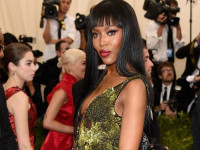Android 5.x theme: AppCompatActivity与toolbar的结合
来源:互联网 发布:js obj defaultvalue 编辑:程序博客网 时间:2024/05/16 05:49
1.概述
Android 5.x theme 是material design风格的主题。在API22之前我们使用标题栏基本都是在ActionBarActivity的Activity中处理的,而API22之后,谷歌遗弃了ActionBarActivity,推荐我们也可以说是强制我们使用AppCompatActivity。
编译版本和匹配的支持库:
- compileSdkVersion 22
- buildToolsVersion “22.0.1”
- compile ‘com.android.support:appcompat-v7:22.1.1’
- 忽然发现ActionBarActivity被弃用了,推荐使用AppCompatActivity,相关blog地址:Android Support Library 22.1
md的主题有:
- @android:style/Theme.Material (dark version)
- @android:style/Theme.Material.Light (light version)
- @android:style/Theme.Material.Light.DarkActionBar
与之对应的Compat Theme:
- Theme.AppCompat
- Theme.AppCompat.Light
- Theme.AppCompat.Light.DarkActionBar
<!-- Base application theme. --> <style name="AppTheme" parent="Theme.AppCompat.Light.DarkActionBar"> <!-- Customize your theme here. --> <item name="colorPrimary">@color/colorPrimary</item> <item name="colorPrimaryDark">@color/colorPrimaryDark</item> <item name="colorAccent">@color/colorAccent</item> </style>
- colorPrimary 对应ActionBar的颜色。
- colorPrimaryDark对应状态栏的颜色
- colorAccent 对应EditText编辑时、RadioButton选中、CheckBox等选中时的颜色。
对于5.0以下的设备,目前colorPrimaryDark无法去个性化状态栏的颜色;
3. Toolbar的使用
在使用ActionBar的时候,一堆的问题:这个文字能不能定制,位置能不能改变,图标间距的控制,由此暴露出了ActionBar设计的不灵活。为此官方提供了ToolBar,并且提供了supprot library用于向下兼容。Toolbar之所以灵活,是因为它其实就是一个ViewGroup,我们在使用的时候和普通的组件一样,在布局文件中声明。
3.1 使用方法
(1)隐藏toolbar
我们知道在AndroidManifest.xml清单文件下application中设置了android:theme="@style/AppTheme"而查看AppTheme看到如下样式:
<resources> <style name="AppTheme" parent="Theme.AppCompat.Light.DarkActionBar"> </style> </resources>从名字我们就可以看出来,默认的标题栏为黑色。我们使用了toolbar就必须修改样式文件,将原来的标题栏去掉,继承主题
Theme.AppCompat.Light.NoActionBar,修改后的样式文件如下:<style name="AppTheme" parent="AppTheme.Base"> </style> <style name="AppTheme.Base" parent="Theme.AppCompat.Light.NoActionBar"> <item name="colorPrimary">@color/colorPrimary</item> <item name="colorPrimaryDark">@color/colorPrimaryDark</item> <item name="colorAccent">@color/colorAccent</item> </style>实际上就是设置没有标题,无actionBar主题:
<style name="Theme.AppCompat.Light.NoActionBar"> <item name="windowActionBar">false</item> <item name="windowNoTitle">true</item> </style>为了支持5.0的手机,需要建立一个文件夹values-v21,再新建style.xml文件,设置
<style name="AppTheme" parent="AppTheme.Base"> </style>(2)布局文件中申明
<android.support.design.widget.CoordinatorLayout xmlns:android="http://schemas.android.com/apk/res/android" xmlns:app="http://schemas.android.com/apk/res-auto" xmlns:tools="http://schemas.android.com/tools" android:layout_width="match_parent" android:layout_height="match_parent" tools:context="com.example.jxf.themedemo.MainActivity"> <android.support.design.widget.AppBarLayout android:layout_width="match_parent" android:layout_height="wrap_content" android:theme="@style/AppTheme.AppBarOverlay"> <android.support.v7.widget.Toolbar android:id="@+id/toolbar" android:layout_width="match_parent" android:layout_height="?attr/actionBarSize" app:title="main title" app:subtitle="sub title" app:navigationIcon="@mipmap/ic_launcher_round" app:logo="@mipmap/ic_launcher" android:background="?attr/colorPrimary" /> <TextView android:layout_width="match_parent" android:layout_height="wrap_content" android:text="悬停条目"/> </android.support.design.widget.AppBarLayout> <include layout="@layout/content_main" /> <android.support.design.widget.FloatingActionButton android:id="@+id/fab" android:layout_width="wrap_content" android:layout_height="wrap_content" android:layout_gravity="bottom|end" android:layout_margin="@dimen/fab_margin" app:srcCompat="@android:drawable/ic_dialog_email" /></android.support.design.widget.CoordinatorLayout>(3)代码设定
@Override protected void onCreate(Bundle savedInstanceState) { super.onCreate(savedInstanceState); setContentView(R.layout.activity_main); Toolbar toolbar = (Toolbar) findViewById(R.id.toolbar); setSupportActionBar(toolbar); FloatingActionButton fab = (FloatingActionButton) findViewById(R.id.fab); fab.setOnClickListener(new View.OnClickListener() { @Override public void onClick(View view) { Snackbar.make(view, "Replace with your own action", Snackbar.LENGTH_LONG) .setAction("Action", null).show(); } }); }3.2 定制ToolBar背景色:我们的ToolBar就是一个普通的ViewGroup在布局中,所以我们直接使用background就好,值可以为:?attr/colorPrimary使用主题中定义的值。
ToolBar中包含Nav Icon , Logo , Title , Sub Title , Menu Items
我们可以通过代码设置上述ToolBar中的控件:
@Override protected void onCreate(Bundle savedInstanceState) { super.onCreate(savedInstanceState); setContentView(R.layout.activity_main); Toolbar toolbar = (Toolbar) findViewById(R.id.id_toolbar); // App Logo toolbar.setLogo(R.mipmap.ic_launcher); // Title toolbar.setTitle("App Title"); // Sub Title toolbar.setSubtitle("Sub title"); setSupportActionBar(toolbar); //Navigation Icon toolbar.setNavigationIcon(R.drawable.ic_toc_white_24dp); }可选方案当然如果你喜欢,也可以在布局文件中去设置部分属性:<android.support.v7.widget.Toolbar android:id="@+id/toolbar" android:layout_width="match_parent" android:layout_height="?attr/actionBarSize" app:title="main title" app:subtitle="sub title" app:navigationIcon="@mipmap/ic_launcher_round" app:logo="@mipmap/ic_launcher" android:background="?attr/colorPrimary" />至于Menu Item,依然支持在menu/menu_main.xml去声明,然后复写
onCreateOptionsMenu和onOptionsItemSelected即可: @Override public boolean onCreateOptionsMenu(Menu menu) { // Inflate the menu; this adds items to the action bar if it is present. getMenuInflater().inflate(R.menu.menu_main, menu); return true; } @Override public boolean onOptionsItemSelected(MenuItem item) { // Handle action bar item clicks here. The action bar will // automatically handle clicks on the Home/Up button, so long // as you specify a parent activity in AndroidManifest.xml. int id = item.getItemId(); //noinspection SimplifiableIfStatement if (id == R.id.action_settings) { return true; } return super.onOptionsItemSelected(item); }可选方案也可以通过toolbar.setOnMenuItemClickListener实现点击MenuItem的回调: toolbar.setOnMenuItemClickListener(new Toolbar.OnMenuItemClickListener() { @Override public boolean onMenuItemClick(MenuItem item) { return false; } });关于字体的样式,可以在布局文件设置属性app:titleTextAppearance、app:subtitleTextAppearance或者代码setTitleTextAppearance、setSubTitleTextAppearance设置。设置回退按钮:
假如我的这个界面并不是主界面,而是一个子界面,这个时候我有一个需求,需要回退到上一个界面那么怎么设置左边的图标并实现其方法。其实很简单,在setSupportActionBar(toolbar);后面加入如下代码:
toolbar.setNavigationIcon(R.drawable.back);toolbar.setNavigationOnClickListener(new View.OnClickListener() { @Override public void onClick(View v) { finish(); }});Toolbar的菜单样式:
首先要说明一下,toolbar菜单默认样式的父类为Widget.AppCompat.Light.PopupMenu.Overflow,那么要更改toobar中菜单的弹出的样式,就必须继承这个父类的样式。
<style name="AppTheme.NoActionBar" parent="Theme.AppCompat.Light.NoActionBar"> <item name="colorPrimary">@color/material_blue_500</item> <item name="colorPrimaryDark">@color/material_blue_700</item> <item name="colorAccent">@color/material_green_A200</item> <item name="android:windowBackground">@color/material_green_A200</item> <item name="actionOverflowMenuStyle">@style/LYJMenuStyle</item> </style> <style name="AppTheme.AppBarOverlay" parent="ThemeOverlay.AppCompat.Dark.ActionBar" /> <style name="AppTheme.PopupOverlay" parent="ThemeOverlay.AppCompat.Light" /> <style name="LYJMenuStyle" parent="@style/Widget.AppCompat.Light.PopupMenu.Overflow"> <item name="overlapAnchor">false</item> <item name="android:popupBackground">?attr/colorPrimary</item> <item name="android:dropDownVerticalOffset">0dip</item> </style>
设置这一个属性那么其弹出的样式就与其他APP一样不会覆盖标题栏。
还有其他属性这里简要说明一下:
①<item name="android:popupBackground">?attr/colorPrimary</item>:弹出菜单背景色为标题栏的背景色
②<item name="android:dropDownVerticalOffset">0dip</item>:弹出菜单与标题栏的垂直间距
最后介绍一下菜单里面重要的几个属性:
app:showAsAction有三个值:
always:总是显示在界面上
never:不显示在界面上,只让出现在右边的三个点中
ifRoom:如果有位置才显示,不然就出现在右边的三个点中
系统也为菜单提供了默认的分享菜单与查询菜单,代码如下:
app:actionViewClass="android.support.v7.widget.SearchView"
app:actionProviderClass="android.support.v7.widget.ShareActionProvider"
android:orderInCategory数值越小,显示靠前,且优先级最大。3.3 android.support.design.widget.AppBarLayout
AppBarLayout 是一个包含Toolbar的ViewGroup, Toolbar和其它的view作为AppBarLayout的子View,AppBarLayout整体作为一个app Bar. 布局如下:
<android.support.design.widget.AppBarLayout android:layout_width="match_parent" android:layout_height="wrap_content" android:theme="@style/AppTheme.AppBarOverlay"> <android.support.v7.widget.Toolbar android:id="@+id/toolbar" android:layout_width="match_parent" android:layout_height="?attr/actionBarSize" app:title="main title" app:subtitle="sub title" app:navigationIcon="@mipmap/ic_launcher_round" app:logo="@mipmap/ic_launcher" android:background="?attr/colorPrimary" /> <TextView android:layout_width="match_parent" android:layout_height="wrap_content" android:text="悬停条目"/> </android.support.design.widget.AppBarLayout>
3.4 自定义Toolbar
其实Toolbar是继承ViewGroup的一个容器控件,言外之意就是我们可以在Toolbar添加自己的布局了。
<android.support.v7.widget.Toolbar android:id="@+id/toolbar" android:layout_width="match_parent" android:layout_height="?attr/actionBarSize" android:background="?attr/colorPrimary"> <RelativeLayout android:layout_width="match_parent" android:layout_height="wrap_content" android:gravity="center"> <Button android:layout_width="wrap_content" android:layout_height="wrap_content" android:text="add" /> <TextView android:layout_width="wrap_content" android:layout_height="wrap_content" android:layout_centerInParent="true" android:layout_gravity="center_vertical" android:text="标题" android:textSize="18sp" /> <ImageView android:layout_width="wrap_content" android:layout_height="wrap_content" android:layout_alignParentRight="true" android:background="@drawable/abc_ic_menu_share_mtrl_alpha" /> </RelativeLayout> </android.support.v7.widget.Toolbar>效果图:
这样我们就可以任意给Toolbar布局了。也解决了标题不能居中的问题。
4.Meterial Design主题风格Theme配置
除了Toolbar的风格,我们还可以通过设置Theme主题该控制Android很多控件的风格。直接上一张图片效果。
以上效果的主题配置如下:
<style name="AppTheme" parent="Theme.AppCompat.Light.NoActionBar"> <!-- Customize your theme here. --> <!--导航栏底色--> <item name="colorPrimary">@color/accent_material_dark</item> <!--状态栏底色--> <item name="colorPrimaryDark">@color/accent_material_light</item> <!--导航栏上的标题颜色--> <item name="android:textColorPrimary">@android:color/black</item> <!--Activity窗口的颜色--> <item name="android:windowBackground">@color/material_blue_grey_800</item> <!--按钮选中或者点击获得焦点后的颜色--> <item name="colorAccent">#00ff00</item> <!--和 colorAccent相反,正常状态下按钮的颜色--> <item name="colorControlNormal">#ff0000</item> <!--Button按钮正常状态颜色--> <item name="colorButtonNormal">@color/accent_material_light</item> <!--EditText 输入框中字体的颜色--> <item name="editTextColor">@android:color/white</item> </style>1.colorPrimary: Toolbar导航栏的底色。
2.colorPrimaryDark:状态栏的底色,注意这里只支持Android5.0以上的手机。
3.textColorPrimary:整个当前Activity的字体的默认颜色。
4.android:windowBackground:当前Activity的窗体颜色。
5.colorAccent:CheckBox,RadioButton,SwitchCompat等控件的点击选中颜色
6.colorControlNormal:CheckBox,RadioButton,SwitchCompat等默认状态的颜色。
7.colorButtonNormal:默认状态下Button按钮的颜色。
8.editTextColor:默认EditView输入框字体的颜色。
- Android 5.x theme: AppCompatActivity与toolbar的结合
- Android AppCompatActivity与toolbar的结合
- Activity之AppCompatActivity与toolbar的结合
- AppCompatActivity与toolbar的结合,封装BaseActivity
- AppCompatActivity与toolbar结合的详细使用
- Activity之AppCompatActivity与toolbar的结合
- Android 5.x Theme 与 ToolBar 实战
- Android 5.x Theme 与 ToolBar 实战
- Android 5.x Theme 与 ToolBar 详解
- Android 5.x Theme 与 ToolBar
- Android 5.x Theme 与 ToolBar 实战
- Android 5.x Theme 与 ToolBar 实战
- Android 5.x Theme 与 ToolBar 实战
- Android 5.x Theme 与 ToolBar 实战
- Android 5.x Theme 与 ToolBar 实战
- Android 5.x Theme 与 ToolBar 实战
- Android 5.x Theme 与 ToolBar 实战
- Android 5.x Theme 与 ToolBar 实战
- Android中侧滑菜单的实现
- jstack 命令跟踪 java 应用的堆栈 并分析堆栈结果
- 加密解密(三)——对称加密算法
- CocoaPods报错:[!] Unable to find a specification for xxxx
- 内存中常见异常值的解释(比如0xcccccccc、0xcdcdcdcd和 0xfeeefeee 异常值 ) 原创 2014年04月14日 22:05:38 1217507 * 0xcccccccc :
- Android 5.x theme: AppCompatActivity与toolbar的结合
- Android studio SVN覆盖更新后找回本地代码的方法
- 如何在Intellij IDEA中拉svn分支?
- 网络基础
- loadrunner测试流程
- 第7周【项目2
- 第七周项目一 建立顺序环形队列算法库
- Google Analytics上手
- Rhyme/Linux userdel用户删除命令






